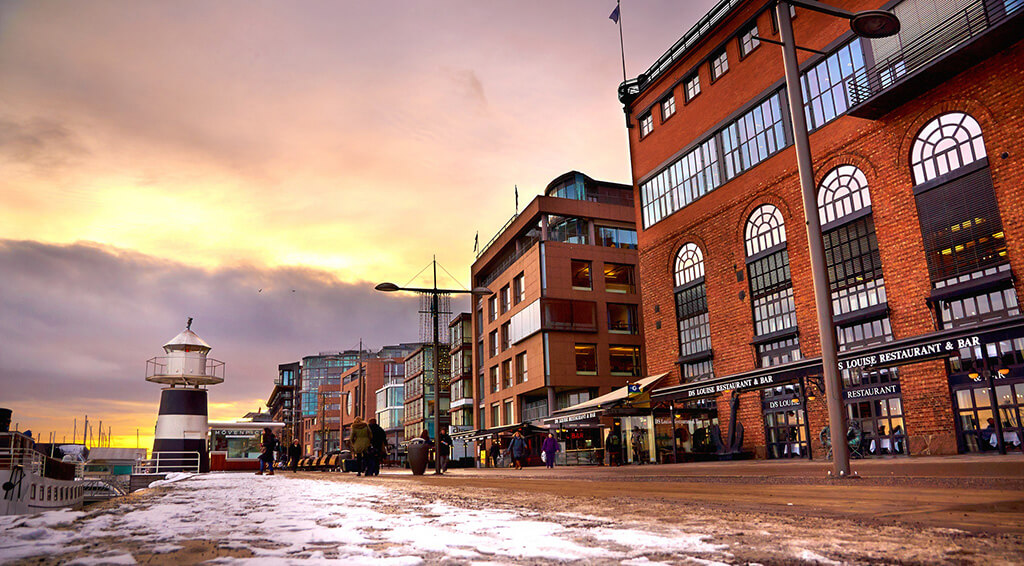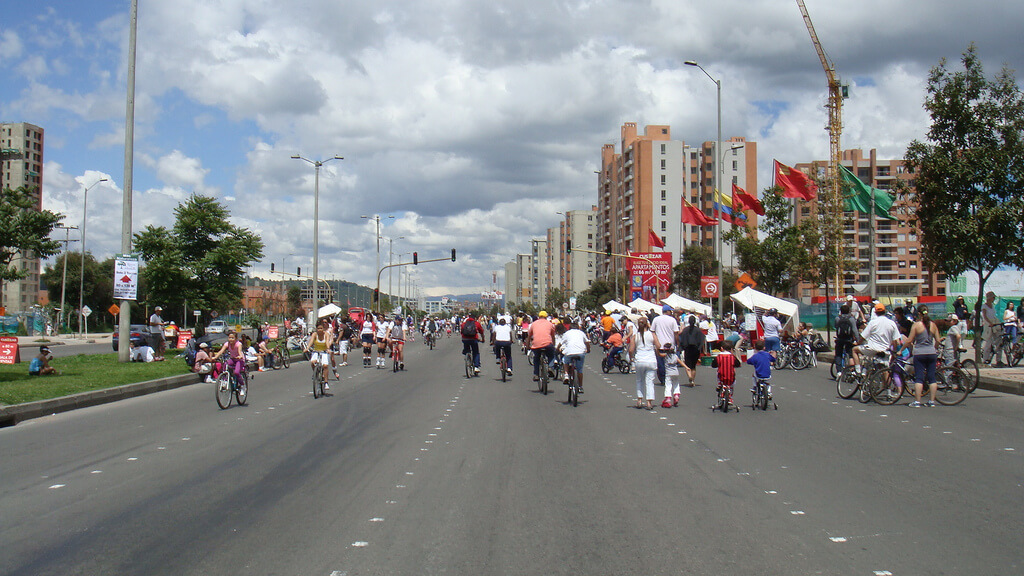Autumn Gear Guide
Find inspiration in our Gear Guide that will keep you out on your bike through wind or rain.
Download NowMore cities worldwide are taking small – and sometimes large – steps to remove cars from their streets.

Oslo, photo by Moyan Brenn
Most cities around the world are starting to take sustainability seriously. While a few of them have historically been car-free (Venice, notably), many other city leaders are realizing that reducing automobile traffic is an obtainable goal that leads to healthier, happier citizens and better air quality.
Inspired by Bogotá’s Ciclovia, an extremely popular weekly car-free event, a growing number of cities and towns around the world have been implementing their own car-free events. Some are even taking it step further, and moving towards a near future when private automobile traffic is significantly reduced in a permanent way. Here are 7 cities around the world making great strides to reduce the number of cars on their roads:
Let’s start it off with a bang. It was recently announced that Norway’s capital, Oslo, will be banning all motorized traffic from its downtown center by 2019. The plan is being put into order in hopes of cutting traffic in the greater city by 20% by 2020, and 30% by 2030. The newly elected city council, made up of the Labor Party, the Greens, and the Socialist Left, are addressing citizen’s doubts about the plans by ensuring the city center is accessible; the council will be building an additional 60 km of bike lanes by 2019, as well as providing huge investments into public transport. Buses and trams will continue to run through downtown, and arrangements will be made for cars transporting disabled peoples, as well as for the distributions of store goods. Oslo will be holding consultations and conducting trial runs prior to implementing the ban.

Photo by Jens Schott Knudsen
A new satellite city is being planned roughly 10 miles from core of Chengdu, China. The hope is that the new city will serve as a model for the modern suburb. The Chicago-based Adrian Smith + Gorden Gill Architecture has designed the prototype city to accommodate 80,000 residents in a circular model with a giant town at its core. The idea is to be able to live and work within a half-square mile circle in which any point in the city will only be a fifteen minute walk. Trains and mass transit will still be connected to the model city allowing for transportation to Chengdu – the firm’s aim is that the restriction of cars will dramatically reduce the city’s carbon footprint.
The German city of Hamburg – which was also named the 2011 European Green Capital – has announced its ambitious Gruenes Netz, or “Green Network”. The plan will link 27 square miles of new and existing green space all over the city, providing safe, car-free commuter paths for all residents and travelers. The plan is to make the city more walkable, and position the bicycle as the dominant form of transportation. By 2035, the Green Network will take up and impressive 40 percent of the city’s land. The projected aim will be a city with easier accessibility to all citizens and more resilience to flooding caused by climate change. The council hopes that with enough connectivity for walking and biking, the city will be car-optional city-wide in twenty years.

Pedestrian traffic in Times Square. Photo by MK Feeney
We’ll be clear: New York will not be planning a city-wide car ban any time soon. However, it is increasing the number of pedestrian areas, along with bike share, the subway, and bussing options. Back in 2009, NY closed a number of iconic areas like Times Square, Broadway, and Herald Square to cars. More recently, a plan was announced to ban cars in parts of Central and Prospect Parks. Moreover, this last year, it was reported that over 30,000 people took part in Summer Streets, an event that opened roads to pedestrians between Central Park and the Brooklyn Bridge. NYC is on its way.
Helsinki expects floods of new citizens over the next few decades. However, the more people that arrive, the fewer cars Helsinki will be allowing on the city streets. The Finnish capitol has announced upcoming plans to transform its existing public transportation system into a modern, point-to-point “mobility on demand” network by 2025.

Bogotá’s weekly Ciclovia, photo by Saúl Ortega
Bogotá has Latin America’s largest network of bicycle routes, called ‘Ciclorutas’ and has a very active biking community. While Bogotá still allows cars, it does implement weekly Ciclovias. Each Sunday and on holidays, 75 miles (120 km) of the city’s streets are close to automobile traffic for seven hours, and over 1.5 million people come out to practice sports, visit recreational facilities, take their bikes out, or just enjoy being outside.
France’s capital hit a crisis point two years ago when the city briefly ranked as the world’s most polluted. Since then the city has been taking steps to significantly reduce the number of private automobiles on its high-traffic streets. Under the leadership of Mayor Anne Hidalgo, Paris closed large swaths of the downtown core to cars in September, an event that resulted in noticeably bluer skies and happier residents. Building on the success of the event, council has announced plans to build a pedestrian zone along the right bank of the River Seine in the summer of 2016.
Find inspiration in our Gear Guide that will keep you out on your bike through wind or rain.
Download Now
How ever did you miss Mexico City??? In 5 years, they’ve gone from zero cyclists (except the delivery guys) to thousands using an innovative rental program called Eco-bici. Since before Eco-bici, they closed down the main road, Avenida Reforma, every Sunday and continue to do so. It is a major weekly event where joggers, runners, cyclists, rollerbladers, etc. come out in all genders to take advantage of 6 hours of a car free environment. Bike stores have gone from few to dozens! This is one aspect of Mexico City to be quite proud of!
HOpe the little car-free city/town outside of Chengdu will work..or it will be another half-ghost modern town..again in China. Maybe the Chinese yuppies will move there if they won’t be seduced by car culture, which I think it’s a huge problem with China and all its claims to be car-free.
The good thing is that mass transit if designed well, is well used there.
It’s Bogota, Colombia. Not Columbia.
Oh jeez, embarrassing. Fixed, thank you!
Comments are closed.